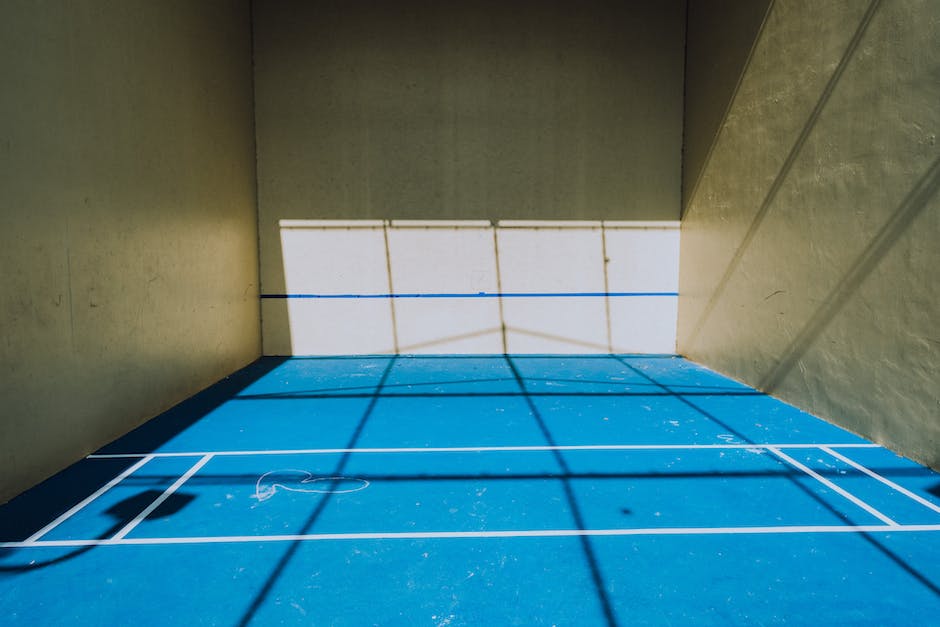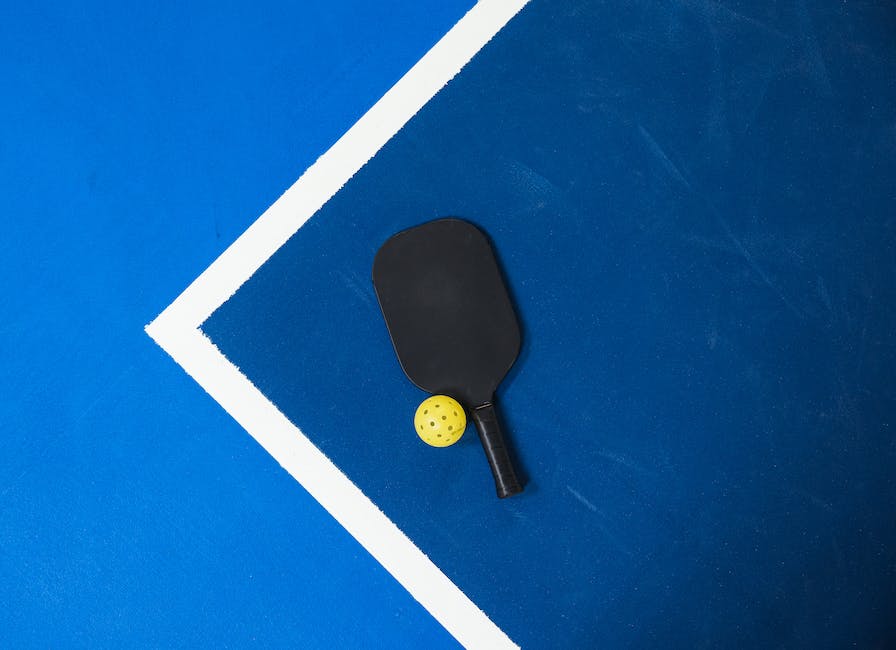Pickleball, with its unique rules and scoring system, presents an exciting departure from traditional sports like tennis and badminton. An integral part of understanding this game is to grasp the scoring basics and one peculiar feature: the starting score in a doubles pickleball game. Notably, unlike most games, a doubles pickleball game starts with a score of 0-0-2. This unconventional scoring trick is intimately tied to the roles of the first and second servers in a doubles team and the distinct structure of the game. Besides, this game’s very essence also lies in the roles assigned to each player and their interplay with the scoring rules. As we throw light on these facets of doubles pickleball, you would also find yourself immersed in an elaborate discussion on the diverse strategies and tactics that teams employ, weaving them seamlessly with the game’s initial score.
Pickleball Score Basics
Understanding Pickleball Scoring Basics
The fundamental concept of scoring in pickleball is that only the serving team can score points. The serving team can either have one or two players, and points can be scored only when players serve. The receiving team, on the other hand, cannot earn points. Their goal during their turn is to prevent the serving team from scoring.
Starting Score in a Doubles Pickleball Game
In a Pickleball game, whether it’s singles or doubles, the game starts with a score of zero for both sides. The first serve of the match is made by the person on the right-hand court on the serving team, also known as the even court (because the score is even at 0-0).
How to Keep Score in Doubles Pickleball
In a doubles pickleball match, both members of the serving team will have the opportunity to serve and score points until they commit a fault, at which point, the serve passes to the opposing team. However, in the first service turn of the game, only one partner on the serving team will serve before the serve passes to the other team. This rule is unique to pickleball and often confusing for new players.
Point Awarding in Pickleball
A team is awarded a point in several scenarios in a pickleball game. Mainly, if the opposition hits the ball out of bounds or into the net, or if they fail to return the ball, a point is scored by the serving team. Also, if the receiving team volleys the ball before it bounces once after a serve or return of serve (a fault known as a ‘serve-volley’), the serving team is awarded a point.
Announcing the Score in Pickleball
The score in pickleball is usually announced by the serving team before each serve. The score announcement includes the serving team’s score first, the receiving team’s score second, and the server number last (either 1 or 2). The number is either 1 or 2 depending on whether you are the first or second server for your team. It’s essential to be aware of who is the current server and rotate positions accordingly on the court during serves.
Unique Scoring Aspects of Pickleball
The side-out scoring system where only the serving team can score points makes pickleball unique among racquet sports. The first team to reach 11 points, leading by at least 2 points, wins the game. If both teams are tied at 10 or more points, the game continues until one team leads by 2 points. The key here is understanding who can score and when you rotate sides on the court.

Understanding the Starting Score in Pickleball
Understanding the Structure of Pickleball
Pickleball is a paddleball sport that combines elements from tennis, badminton, and ping-pong. In a doubles pickleball game, four players are divided into two teams of two. Each team possesses both a first and second server. The game begins when the first server serves the ball to the opposing team, initiating the rally.
After a side-out (a mistake made by the original serving team leading to a loss of service), the service passes to the opposing team. The first player on the new serving team becomes the first server. After their service fault or a fault by their partner, the second server on the same team then serves. When the second server loses a rally, a side-out occurs and the opposing team’s first server starts their serve.
This sequence helps to create the unique scoring system in pickleball.
The Scores in Pickleball
The game starts with the first serve from the first server on the starting team. However, the unique element in pickleball is that only the serving team can score points. The receiving team cannot score. This means that unless the serving team capitalizes on their serve with successful rally wins, the score remains stagnant.
The first team to 11 points, leading by at least 2 points, wins the match. If the game is tied at 10-10, it continues until one team leads by 2 points.
Starting Score in Doubles Pickleball: 0-0-2
A doubles pickleball match starts with the score of 0-0-2. You may wonder why it starts with ‘2’ considering there are only two teams playing, and scores are often 0-0 at the start of other sports games.
The ‘2’ denotes that the second server on the first serving team is serving. That is because, uniquely in pickleball, the first serving team starts with only one server, not two. Thus, after the first server loses a rally or makes a service fault, instead of passing to the second server in team 1, the serve immediately goes to the opposing team.
So technically, the start of the game is the only time during a match when the serving is passed directly to the other team rather than to the second server in the same team.
Therefore, even though no points have been scored, and no server from the initial receiving team has served yet, the score at the start of the game is announced as 0-0-2, where ‘2’ stands for the second server in the next rally, which will be the first server from the initial receiving team.
This starting score essentially fast-tracks the sequence and quickly engages all players in the game, providing each an opportunity to serve and rally early in the match, fostering a balanced and dynamic game right from the beginning.

Role of each Player
Understanding the Starting Score in Doubles Pickleball Game
In pickleball doubles, the game starts with a score of 0-0-2. The sequence represents the score of the serving team, the score of the receiving team, and the server’s number (1 or 2) in the serving team. Each team consists of two players, player 1 and player 2, each having specific roles in the game. The game employs a two-serve system where both players on the team will serve before it’s the other team’s turn to serve.
First Server Role in a Doubles Pickleball
Player 1 starts the serve from the right service square and aims diagonally to the service square on the opposing team’s side. It’s important to remember the serve must be hit underhand and the paddle must cross below the waist during the serve. The server must also let the ball bounce once before hitting it over the net. If all rules are adhered to and the opposing team cannot return the serve or makes a fault, the serving team scores a point. The server continues to serve until a fault is made.
Second Server’s Role in a Doubles Pickleball
Once the first server makes a fault, the serve passes to player 2, the second server. Unlike the first server, the second server starts serving from the left service square, aiming diagonally to the opponent’s service square. They continue to serve until they also make a fault. A fault may occur due to not serving diagonally, stepping on or inside the baseline before finishing the serve, or the ball landing out of bounds. When the second server makes a fault, no points are gained and the service switches to the opposing team.
Role of the Receiving Team in a Doubles Pickleball Game
While the serving team tries to rack up points through their serve, the receiving team aims to initiate a fault from the serving team to gain the chance to serve and score. The player on the receiving team situated diagonally to the serving player is responsible for returning the serve. The serve must bounce once before the player returns it, and likewise, the return ball should once again bounce before the serving team strikes it. This rule is known as the “double-bounce rule”. The receiving team does not gain or lose points but vies for an opportunity to serve.
Understanding the role of each player in pickleball significantly influences the starting score and the progression of the game. Doubling up on strategy while knowing the rules can lead to excellent teamwork and potentially, winning the game.

Strategy and Tactics
Starting Score in Doubles Pickleball
In pickleball doubles, as sanctioned by the USA Pickleball Association, each game starts at 0-0-2. The peculiar starting score has its reason as it limits the serving team’s advantage, as the opposing team will start from their second service. It’s evident then that the starting score of a doubles pickleball game can greatly influence the initial strategies and tactics employed by both teams.
Understanding the Pickleball Scoring System
To devise effective pickleball strategies, understanding the scoring system is crucial. In pickleball, only the serving team can score points with a maximum score of 11 points, win by at least a 2-point margin. Each player from the serving team gets an opportunity to serve and points are made during these. Hence, the game starting at 0-0-2 indicates that the first serving team doesn’t get this advantage, only one partner gets the chance to serve before the service passes to the opponents.
Strategies for the Serving Team
For the team starting at 0-0-2, they must aim to take advantage of this lone service opportunity. Employing aggressive tactics, such as hard and rapid shots, can help to catch the opponent off guard. Alternatively, a well-placed soft serve can disrupt the opponent’s rhythm or positioning, opening up avenues for scoring.
Tactics for the Receiving Team
For the receiving team, their goal should be to thwart the initial serve of the opponents as efficiently as possible to quickly gain the serve. They can use defensive tactics, such as returning shots with precision and control, to prevent the serving team from scoring. Additionally, exploiting the absence of a second server on the opponent’s side can work in their favor.
Adapting Based on Score Progression
As the score advances, both teams must continually adapt their strategies. They should adjust their balance between aggressive tactics (to score points) and defensive ones (to prevent the other team from scoring). The team’s current score, and importantly the difference with the opponent’s score, should inform these tactical decisions.
Collaborative Tactics and Communication
In doubles pickleball, successful tactics require seamless collaboration and communication between partners. Knowing where and when your partner will strike can help in formulating effective strategies. For instance, one common tactic is the ‘middle attack’, where both players focus their shots towards the center, confusing opponents about who should return the shot.
Remember, the best strategies and tactics should be flexible
By understanding and employing these strategies and tactics, you can maneuver the game of doubles pickleball to your advantage.

Understanding the details of pickleball, particularly the doubles gameplay, requires a keen look into the correlation between the rules, player roles, and tactical maneuvers. The intrigue of the game begins right from the starting score- a unique 0-0-2 in a doubles match. The game grows in complexity and excitement as the roles of the first and second servers come into focus, and their strategic performance starts shaping the course of the match. Further, the strategies that come into play, considering the initial score, bring forth a high level of expertise, critical thinking, and teamwork. All these components are pivotal in harnessing the real thrill of pickleball, rendering it as more than just another paddle sport. It’s, after all, a game where every serve, every volley, every dink matters, right from the ‘odd’ beginning to the final point!

I am Michael Wanner, an experienced and educated expert in the field of pickleball. I hold a degree in Sports Science from Cleveland State University, Ohio, USA. My expertise lies in the technical aspects of pickleball and how to play it effectively. I have spent many years playing and coaching pickleball and have a wealth of knowledge to share with my readers. I am a valuable resource for anyone looking to improve their pickleball skills and strategies.
